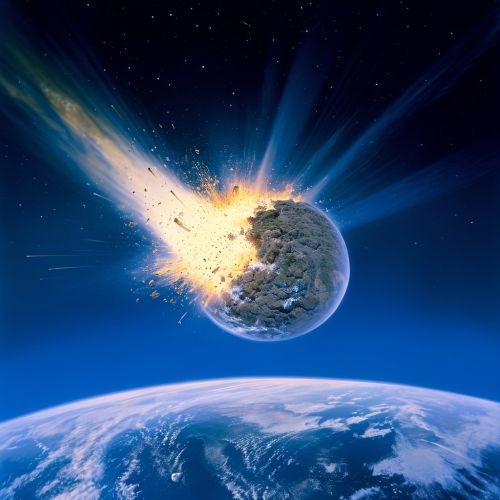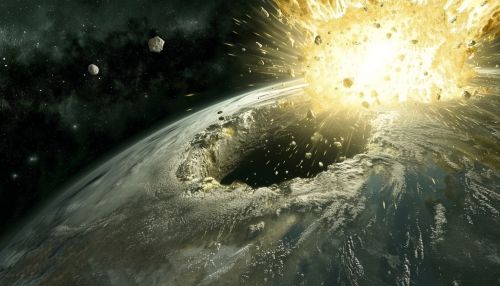Moon Formation
Formation Theories
The formation of the moon has been a subject of scientific inquiry and speculation for centuries. The leading theory, known as the Giant Impact Hypothesis, suggests that the moon was formed from the debris left over after a collision between Earth and a Mars-sized body named Theia. This event is believed to have occurred approximately 4.5 billion years ago, shortly after the formation of the solar system.


Giant Impact Hypothesis
The Giant Impact Hypothesis, also known as the Big Splash or the Theia Impact, suggests that the moon was formed out of the debris left over from a collision between the Earth and an astronomical body the size of Mars, approximately 4.5 billion years ago, in the Hadean eon; about 20 to 100 million years after the solar system coalesced. The colliding body is sometimes called Theia, from the name of the mythical Greek Titan who was the mother of Selene, the goddess of the moon.
Theia
Theia, the hypothetical planet-sized body, is believed to have been approximately the size of Mars. The impact between Earth and Theia would have been a violent event, releasing an incredible amount of energy and melting a large portion of the Earth's crust. The debris from this impact would have been ejected into space, where it eventually coalesced to form the moon.
Moon's Composition
The moon's composition closely mirrors that of the Earth's mantle and crust, which supports the Giant Impact Hypothesis. The moon lacks a significant iron core, which is also consistent with this theory, as the Earth's core would have remained intact after the impact. Furthermore, the isotopic compositions of lunar and terrestrial rock are identical, implying a common origin.
Alternative Theories
While the Giant Impact Hypothesis is the most widely accepted theory for the moon's formation, there are several alternative theories. These include the Fission Theory, which suggests the moon was once part of the Earth and somehow separated from the Earth early in the history of the solar system. The Capture Theory proposes that the moon was formed elsewhere in the solar system and was later captured by the gravitational field of the Earth.
